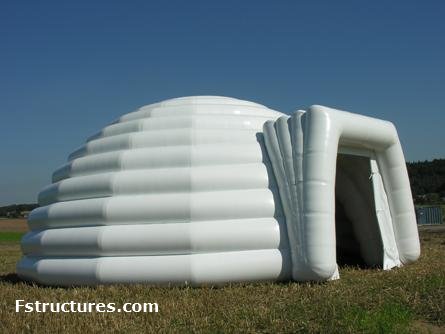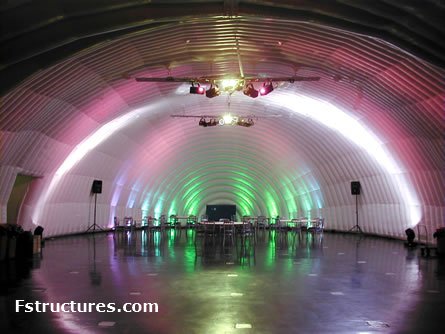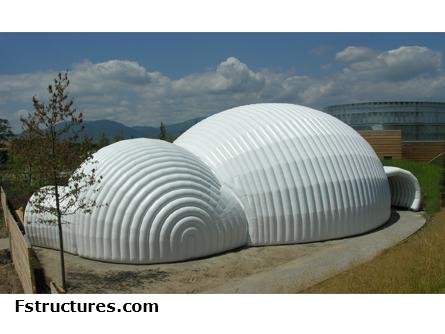|
|
›
The Benefits of Inflatable Buildings.
The Benefits of Inflatable Buildings
(99.5% of the buildings are free)
Distribution Source : ArriveNet Editorials
Is it possible to create a building with walls and a roof made from 99.5% fresh air? Would it then be possible for this building to withstand anything the weather could throw at it – from gale force winds to heavy snow fall?
The surprising answer to these questions is yes! Not only is it possible but it is already being done in many countries around the world. The buildings in question are in fact inflatable buildings.

It’s important at this point to make a distinction between air-supported buildings and inflatable buildings. A traditional air-supported building is one which is comprised of a single layer membrane attached to the ground around its perimeter. Air is blown under the membrane to lift it off the ground and form the shape of the building.
An inflatable building on the other hand, uses two layers of membrane connected together typically using spars made from the same material. The cavity formed between the layers is pressurised with air producing a rigid structural element which allows large span structures to be achieved.
The key difference between the two styles of building is that air-supported buildings require airlocks at all the access points to prevent air being lost when doors are opened since the entire occupied space of the building is pressurised.

An inflatable building only requires pressurised air within the cavities of the walls and so does not require airlocks since the occupied interior of the building is at normal atmospheric pressure. Since a much lower volume of air is pressurised, inflatable buildings require a lot less power for continuous operation.
The air contained within the walls of an inflatable building become a true structural part of the building. The membranes used in the construction of such buildings are typically less than 1mm thick and so the amount of membrane used compared to the volume of air contained within the walls is incredibly low (typically less than 0.5%).
A major benefit of this style of construction is that air is available just about everywhere on the planet. When a building needs to be moved, the air can simply be allowed to escape enabling an entire building to be packed in to a very small volume compared to its inflated size. The building can then be transported easily to its new location and inflated using the one building material which is readily available everywhere – air! Better still, this building material is absolutely free.
See more examples at Tectoniks.com |
|
|
|
| Viewed: 27992 Comments (6) Share this article » |
|
|
|
|





